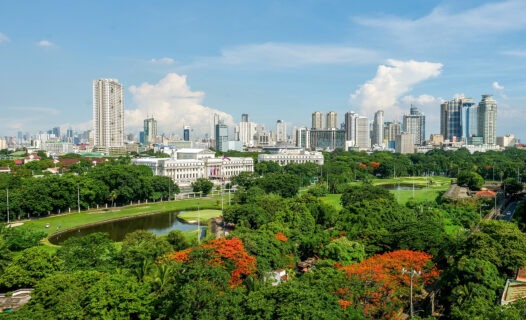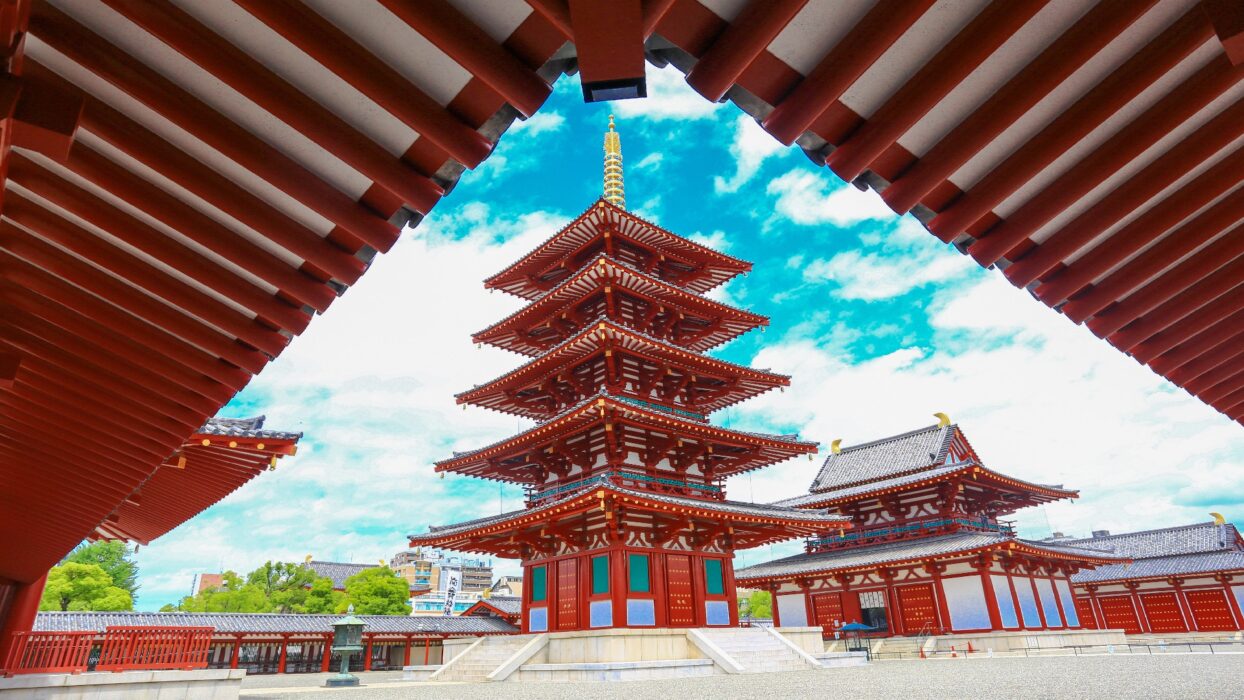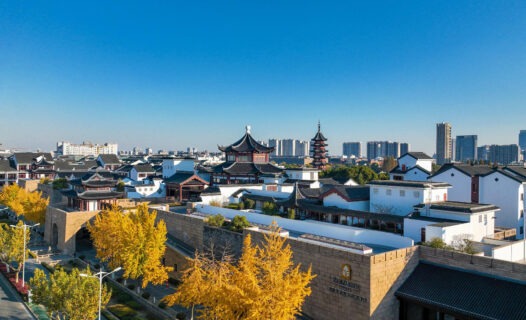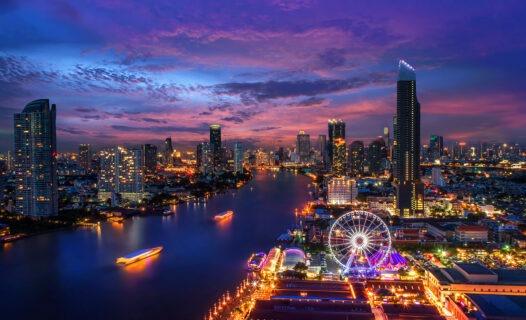Cherry Blossoms and Zen Serenity: A Perfect Pairing
Cherry blossom viewing, or hanami, is more than just a seasonal spectacle in Japan; it's a cherished cultural ritual that draws locals and travelers alike to parks, gardens, and temples across the country. Among these enchanting spots, the Ryoanji Rock Garden stands out not only for its breathtaking beauty but also for its deep connections to Zen philosophy. As the delicate pink petals of cherry blossoms dance in the breeze, they create a serene backdrop that invites reflection and tranquility, perfectly embodying the essence of Zen.
At Ryoanji, the juxtaposition of the meticulously arranged rocks and the ephemeral nature of cherry blossoms offers a unique opportunity to explore the harmony between nature and human artistry. This iconic rock garden, renowned for its minimalist design, encourages visitors to pause, breathe, and immerse themselves in the moment—echoing the core principles of Zen practice. So, whether you're a seasoned traveler or a first-time visitor, prepare to be captivated by the tranquil allure of Ryoanji during cherry blossom season.
Discovering Ryoanji Rock Garden: A Historical Perspective
Stepping into Ryoanji Temple is like stepping back in time. This historical site, nestled in the heart of Kyoto, is not just a feast for the eyes but also a treasure trove of cultural significance. The rock garden, a masterpiece of Japanese garden design, has captivated hearts for centuries, making it a must-visit destination for anyone exploring the rich tapestry of Kyoto's heritage.
Ryoanji History: From Temple to Zen Garden
Ryoanji Temple was founded in the 15th century and has since become a cornerstone of Zen Buddhism in Japan. Originally built as a villa for a powerful statesman, it was transformed into a temple in 1450. The rock garden, created shortly after, is thought to have been designed to encourage meditation and contemplation. Its layout, featuring 15 carefully placed rocks on a bed of white gravel, invites visitors to ponder the meaning of existence, a core tenet of Zen philosophy.
Cultural Significance of Ryoanji in Japanese Heritage
Ryoanji is more than just a beautiful temple; it represents a profound connection to Japanese culture and spirituality. The garden's design principles reflect the aesthetics of Japanese rock gardens, emphasizing simplicity and natural beauty. This cultural significance is further amplified during cherry blossom season, when the garden becomes a canvas for the fleeting beauty of sakura, reminding us of the transient nature of life itself.
As you stroll through the temple grounds, take a moment to appreciate the harmonious blend of architecture and nature. The cherry blossoms, in full bloom, enhance the garden's tranquility, creating a picturesque scene that inspires both peace and introspection.
The Art of Cherry Blossom Viewing: A Cultural Experience
As spring unfolds, the cherry blossoms at Ryoanji draw visitors from all walks of life, eager to partake in the time-honored tradition of hanami. This cultural experience is steeped in history, offering a unique lens through which to appreciate the beauty of nature and the impermanence of life.
Hanami: More than Just Flower Viewing
Hanami is not merely about gazing at blossoms; it's a celebration of nature's beauty and a time for reflection and connection. Families and friends gather beneath the blooming trees, sharing laughter, stories, and delicious food. At Ryoanji, this practice takes on an added layer of significance, as the rock garden's serene atmosphere enhances the experience of togetherness and mindfulness.
Cherry Blossom Symbolism in Japanese Culture
In Japanese culture, cherry blossoms symbolize the fleeting nature of life, a theme that resonates deeply within Zen philosophy. The blossoms bloom for only a short time, reminding us to cherish each moment. As you sit quietly in the rock garden, surrounded by the gentle rustle of petals, take a moment to reflect on the beauty of the present. This emotional connection to the blossoms transforms the experience into something truly special, inviting visitors to embrace both joy and contemplation.
Zen Gardens and Mindfulness: Finding Peace at Ryoanji
The principles of Zen gardens extend beyond mere aesthetics; they serve as a pathway to mindfulness and meditation. At Ryoanji, the rock garden is not just a visual delight but also a space designed for spiritual practice and inner peace.
Zen Philosophy and Its Influence on Garden Design
Zen philosophy emphasizes simplicity, tranquility, and a deep connection to nature. These principles are beautifully illustrated in the design of Ryoanji's rock garden, where each element is carefully chosen to create a harmonious environment. The rocks represent mountains, while the gravel symbolizes water, inviting visitors to contemplate the natural world and their place within it.
Meditation Techniques to Practice at Ryoanji
To enhance your visit, consider practicing some simple meditation techniques while at Ryoanji. Find a quiet spot, close your eyes, and focus on your breath. Allow the sounds of nature—the rustling leaves, the gentle breeze, and the distant chirping of birds—to wash over you. This practice of mindfulness will deepen your connection to the garden and the cherry blossoms, allowing you to fully appreciate their beauty.
Cherry Blossom Festivals: Celebrating Nature's Beauty
Spring in Kyoto is not just about the breathtaking cherry blossoms; it’s also a time for vibrant festivals that celebrate this fleeting beauty. The cherry blossom season brings a lively atmosphere to Ryoanji and other parks across the city, where locals and visitors gather to revel in the stunning sights and sounds of nature's rebirth.
Key Events During Cherry Blossom Season
During this magical time, Kyoto hosts several cherry blossom festivals, each offering unique experiences. One of the most popular is the Hanami Festival, where traditional music, dance performances, and food stalls fill the air with joy and excitement. You can find everything from sakura-themed snacks to local delicacies, all enjoyed under the blooming trees.
Another must-see event is the Kyoto Cherry Blossom Festival, held in various locations, including the nearby Maruyama Park. This festival features illuminated cherry blossoms at night, creating a dreamlike atmosphere that’s perfect for an evening stroll. Don’t forget to bring your camera—these enchanting views are too beautiful to miss!
How Festivals Enhance the Hanami Experience
Attending these festivals transforms your cherry blossom viewing into a full-blown celebration of life and nature. Picture yourself surrounded by laughter, music, and the sweet scent of sakura. The communal spirit of hanami fosters connections, whether you’re sharing a picnic with friends or meeting fellow travelers under the blooming trees. The energy is contagious, and it’s a fantastic way to immerse yourself in Japanese culture.
Photography Tips: Capturing the Essence of Ryoanji
With cherry blossoms painting the landscape in soft pink hues, Ryoanji Rock Garden offers countless opportunities for stunning photography. Whether you’re a seasoned photographer or just want to capture some memories, these tips will help you snap some breathtaking shots.
Best Angles and Times for Photography
Golden hour—just after sunrise or before sunset—provides the best lighting for capturing the delicate beauty of cherry blossoms. Try to find vantage points that showcase both the blossoms and the iconic rock garden layout. The contrast between the soft petals and the rugged rocks creates a visually striking image. Don’t forget to experiment with different angles; sometimes, a low shot looking up at the trees can yield astonishing results!
Equipment Recommendations for Cherry Blossom Photography
If you’re serious about photography, consider bringing a DSLR or mirrorless camera for maximum flexibility. A wide-angle lens is perfect for capturing the expansive beauty of the rock garden and the surrounding cherry trees. If you’re using a smartphone, take advantage of portrait mode to create a beautiful depth of field effect that highlights the blossoms in the foreground.
Lastly, be patient and wait for the right moment. Whether it’s a gentle breeze causing the petals to dance or a visitor lost in contemplation, capturing the essence of Ryoanji takes time. Enjoy the process, and let the beauty of the garden inspire your creativity!
Culinary Delights: Dining Near Ryoanji Temple
No visit to Ryoanji is complete without indulging in some local culinary delights! The area around the temple is dotted with quaint cafes and restaurants, each offering a taste of Kyoto’s rich culinary heritage.
Must-Try Dishes During Cherry Blossom Season
As you explore, keep an eye out for seasonal sakura-themed dishes, such as sakura mochi (sweet rice cakes wrapped in cherry leaves) and sakura tea, made from the petals of cherry blossoms. These treats not only taste delightful but also connect you to the season in a unique way.
Best Cafes and Restaurants Near Ryoanji
For a cozy dining experience, head to Yudofu Sagano, known for its delicious tofu dishes made from locally sourced ingredients. The serene atmosphere complements the peacefulness of Ryoanji, making it a perfect spot to unwind after a day of sightseeing.
If you’re in the mood for something sweet, don’t miss Tsujiri, famous for its matcha desserts. Their matcha parfait, layered with creamy green tea ice cream, is a heavenly treat that will leave your taste buds dancing!
Practical Information for Travelers: Your Guide to Ryoanji
Before you head out to explore Ryoanji Temple and its enchanting rock garden, it's essential to know some practical information to make your visit seamless and enjoyable.
Visitor Information: Hours, Fees, and Access
Ryoanji Temple is typically open from 8:00 AM to 5:00 PM, but it’s wise to check their official website for any seasonal changes. Admission fees are quite reasonable, and the experience is worth every yen! Remember that during peak cherry blossom season, the garden can get crowded, so visiting early in the morning or later in the afternoon can provide a more tranquil experience.
Transportation Options to Ryoanji
Getting to Ryoanji is straightforward. You can take the Kyoto City Bus or hop on the JR train to get close to the temple. If you’re feeling adventurous, consider renting a bike to explore the beautiful streets of Kyoto at your own pace. The ride to Ryoanji is scenic and will allow you to soak in the charm of the city.
Seasonal Travel Insights: Best Times to Visit Ryoanji
Timing your visit to Ryoanji can enhance your experience significantly. While cherry blossoms are the main attraction in spring, each season brings its unique charm to the garden.
Seasonal Beauty: Spring vs. Other Seasons
Spring is undoubtedly the star season, with cherry blossoms in full bloom. However, visiting in autumn offers a stunning display of fall foliage, with vibrant reds and oranges painting the landscape. Summer brings lush greenery, while winter casts a serene blanket of snow over the garden, creating a different kind of beauty.
Planning Your Visit Around Cherry Blossom Season
Cherry blossom season usually peaks in late March to early April, but the exact timing can vary each year. Keep an eye on local forecasts and consider planning your visit around the expected bloom dates for the best experience. Joining local hanami celebrations during this time will enrich your visit and give you a taste of Kyoto’s vibrant culture.
Sustainability and Conservation: Protecting Kyoto's Natural Beauty
As you enjoy the beauty of Ryoanji, it’s important to remember the significance of preserving such precious natural spaces. Ryoanji Temple and its rock garden are committed to sustainable practices that protect the environment and promote conservation.
Eco-Friendly Practices in Japanese Gardens
Japanese gardens, including Ryoanji, often utilize traditional methods of maintenance that respect nature. These practices include organic gardening techniques, water conservation, and habitat preservation for local wildlife. By maintaining the garden in harmony with nature, Ryoanji exemplifies the principles of Zen philosophy.
How Visitors Can Contribute to Conservation Efforts
As a visitor, you can play a role in preserving the beauty of Ryoanji. Make sure to follow the garden rules, such as staying on designated paths and avoiding littering. Consider participating in local conservation programs or workshops that educate visitors on sustainable practices. Every small action counts!
Fun Facts About Ryoanji and Cherry Blossoms
Ready to impress your friends with some fun facts? Here are a few intriguing tidbits about Ryoanji Temple and cherry blossoms that you might not know!
Unique Features of the Ryoanji Rock Garden
The Ryoanji Rock Garden is famous for its 15 rocks, but did you know that the arrangement is designed to be viewed from one specific angle? Depending on where you sit, it may appear that not all rocks are visible at once, adding to the garden's mystique. This clever design encourages contemplation and reflection, perfectly aligning with Zen principles.
Lesser-Known Cherry Blossom Facts
Cherry blossoms, or sakura, have been celebrated in Japan for centuries, but did you know that there are over 200 different varieties? Each type has its unique bloom time and characteristics, contributing to the stunning diversity of cherry blossoms you can see throughout Japan. The Yoshino cherry tree is the most popular variety, known for its beautiful pale pink flowers.
Now that you’re armed with these fascinating facts, you’re ready to explore Ryoanji and appreciate the beauty of cherry blossoms even more!
Commonly Asked Questions (FAQs)
Frequently Asked Questions About Ryoanji
What is the best time to visit Ryoanji for cherry blossoms?
The best time is typically late March to early April, depending on the weather. Check local forecasts for the exact timing of the bloom.
Is there an entry fee for Ryoanji Temple?
Yes, there is a small admission fee, which contributes to the maintenance of the temple and garden.
Tips for First-Time Visitors
How long should I plan to spend at Ryoanji?
A visit usually takes about 1-2 hours, allowing time to explore the garden and enjoy the peaceful atmosphere. Consider adding extra time if you want to participate in meditation or photography.
Can I bring food into the garden?
Food is generally not allowed in the garden to maintain its tranquility, but you can enjoy a picnic in designated areas nearby.
With these insights, you’re all set for a memorable visit to Ryoanji Rock Garden during cherry blossom season! Embrace the tranquility, enjoy the beauty, and let the spirit of Zen guide you through this enchanting experience.



















